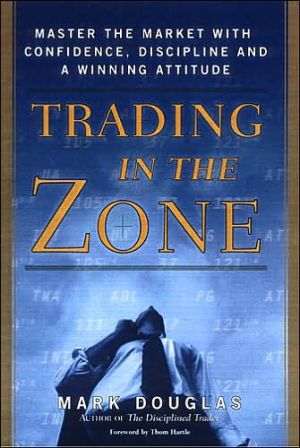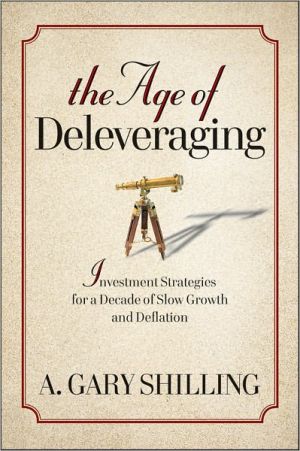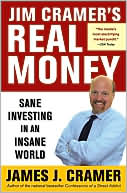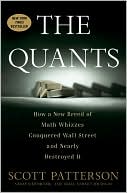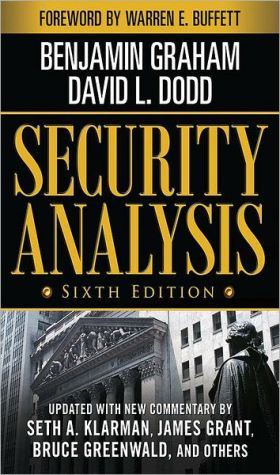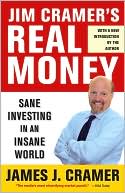Trading in the Zone: Master the Market with Confidence, Discipline and a Winning Attitude
Maximizing the trader's state of mind is the key to successful results. \ Conflicts, contradictions and paradoxes in thinking can spell disaster for even a highly motivated, astute and well grounded trader. Mark Douglas, a commodities trader and one who has been around traders for over fifteen years, sends the message that thinking strategy will profoundly influence a trader's success rate. Douglas addresses five very specific issues to give traders the insight and understanding about...
Search in google:
Maximizing the trader's state of mind is the key to successful results. Conflicts, contradictions and paradoxes in thinking can spell disaster for even a highly motivated, astute and well grounded trader. Mark Douglas, a commodities trader and one who has been around traders for over fifteen years, sends the message that thinking strategy will profoundly influence a trader's success rate. Douglas addresses five very specific issues to give traders the insight and understanding about themselves that will make them consistent winners in the market. Trading In The Zone offers specific solutions to the "people factor" of commodity price movement. It uncovers the true culprit for lack of consistency when it comes to stock picking: lack of focus and self-confidence. Through simple exercises, traders will learn how to think in terms of probabilities, and adopt the specific beliefs necessary to developing a winner's mindset. Along the way, they'll gain keen insights into their own entrenched misconceptions about the market. Backed by compelling examples, Trading In The Zone adds a new dimension to getting an edge on the market. Through a better understanding of themselves, as well as of Wall Street's realities, traders will come to leverage the power of their psyche for unprecedented profitability. Publishers Weekly Douglas, president of the seminar firm Trading Behavior Dynamics, focuses on the psychology of successful traders. Instead of offering specific strategies, he advises readers, "The first step on the road...is to understand and completely accept the psychological realities of trading." It may be too abstract for some, but given trading's risks, this book could assist experienced investors willing to engage in self-reflection. (Jan.) Copyright 2000 Cahners Business Information.
Chapter 1: The Road to Success: Fundamental, Technical, or Mental Analysis\ Who remembers when fundamental analysis was considered the only real or proper way to make trading decisions? When I started trading in 1978, technical analysis was used by only a handful of traders, who were considered by the rest of the market community to be, at the very least, crazy. As difficult as it is to believe now, it wasn't very long ago when Wall Street and most of the major funds and financial institutions thought that technical analysis was some form of mystical hocus-pocus.\ Now, of course, just the opposite is true. Almost all experienced traders use some form of technical analysis to help them formulate their trading strategies. Except for some small, isolated pockets in the academic community, the "purely" fundamental analyst is virtually extinct. What caused this dramatic shift in perspective?\ I'm sure it's no surprise to anyone that the answer to this question is very simple: Money! The problem with making trading decisions from a strictly fundamental perspective is the inherent difficulty of making money consistently using this approach.\ For those of you who may not be familiar with fundamental analysis, let me explain. Fundamental analysis attempts to take into consideration all the variables that could affect the relative balance or imbalance between the supply of and the possible demand for any particular stock, commodity, or financial instrument. Using primarily mathematical models that weigh the significance of a variety of factors (interest rates, balance sheets, weather patterns, and numerous others), the analyst projects what the price should be at some point in the future.\ The problem with these models is that they rarely, if ever, factor in other traders as variables. People, expressing their beliefs and expectations about the future, make prices move-not models. The fact that a model makes a logical and reasonable projection based on all the relevant variables is not of much value if the traders who are responsible for most of the trading volume are not aware of the model or don't believe in it.\ As a matter of fact, many traders, especially those on the floors of the futures exchanges who have the ability to move prices very dramatically in one direction or the other, usually don't have the slightest concept of the fundamental supply and demand factors that are supposed to affect prices. Furthermore, at any given moment, much of their trading activity is prompted by a response to emotional factors that are completely outside the parameters of the fundamental model. In other words, the people who trade (and consequently move prices) don't always act in a rational manner.\ Ultimately, the fundamental analyst could find that a prediction about where prices should be at some point in the future is correct. But in the meantime, price movement could be so volatile that it would be very difficult, if not impossible, to stay in a trade in order to realize the objective.\ Technical analysis has been around for as long as there have been organized markets in the form of exchanges. But the trading community didn't accept technical analysis as a viable tool for making money until the late 1970s or early 1980s. Here's what the technical analyst knew that it took the mainstream market community generations to catch on to.\ A finite number of traders participate in the markets on any given day, week, or month. Many of these traders do the same kinds of things over and over in their attempt to make money. In other words, individuals develop behavior patterns, and a group of individuals, interacting with one another on a consistent basis, form collective behavior patterns. These behavior patterns are observable and quantifiable, and they repeat themselves with statistical reliability.\ Technical analysis is a method that organizes this collective behavior into identifiable patterns that can give a clear indication of when there is a greater probability of one thing happening over another. In a sense, technical analysis allows you to get into the mind of the market to anticipate what's likely to happen next, based on the kind of patterns the market generated at some previous moment.\ As a method for projecting future price movement, technical analysis has turned out to be far superior to a purely fundamental approach. It keeps the trader focused on what the market is doing now in relation to what it has done in the past, instead of focusing on what the market should be doing based solely on what is logical and reasonable as determined by a mathematical model. On the other hand, fundamental analysis creates what I call a "reality gap" between "what should be" and "what is." The reality gap makes it extremely difficult to make anything but very long-term predictions that can be difficult to exploit, even if they are correct.\ In contrast, technical analysis not only closes this reality gap, but also makes available to the trader a virtually unlimited number of possibilities to take advantage o£ The technical approach opens up...
\ Publishers Weekly\ - Publisher's Weekly\ Douglas, president of the seminar firm Trading Behavior Dynamics, focuses on the psychology of successful traders. Instead of offering specific strategies, he advises readers, "The first step on the road...is to understand and completely accept the psychological realities of trading." It may be too abstract for some, but given trading's risks, this book could assist experienced investors willing to engage in self-reflection. (Jan.) Copyright 2000 Cahners Business Information.\ \
